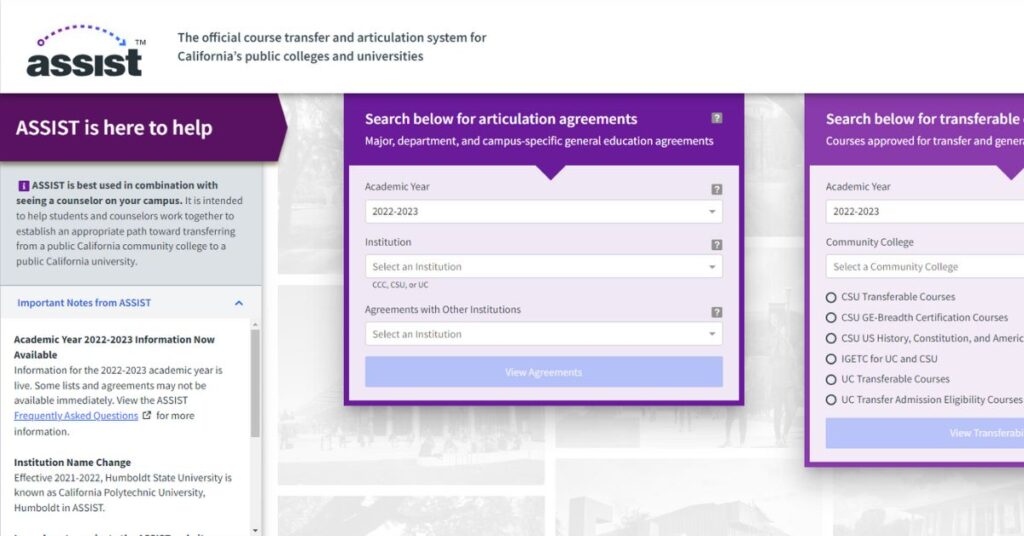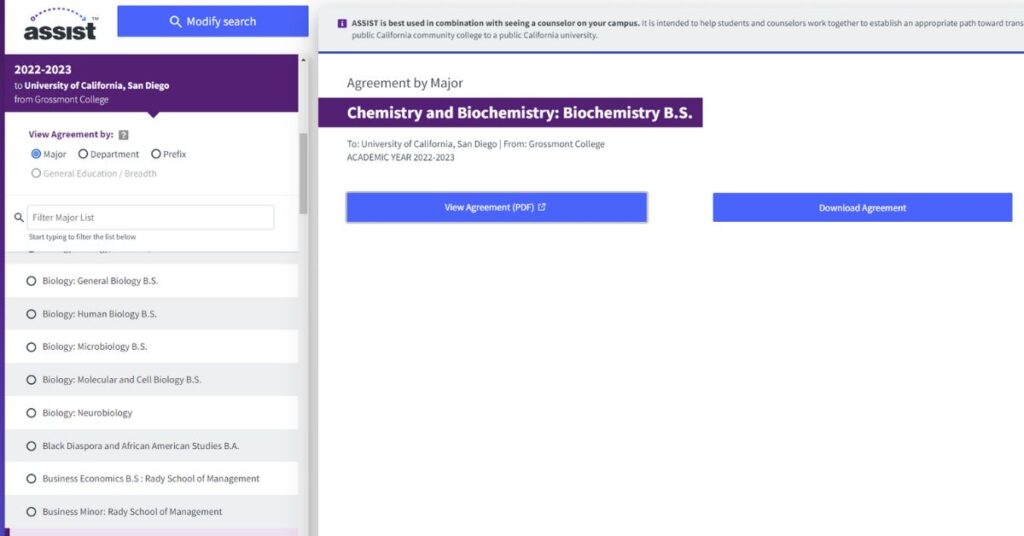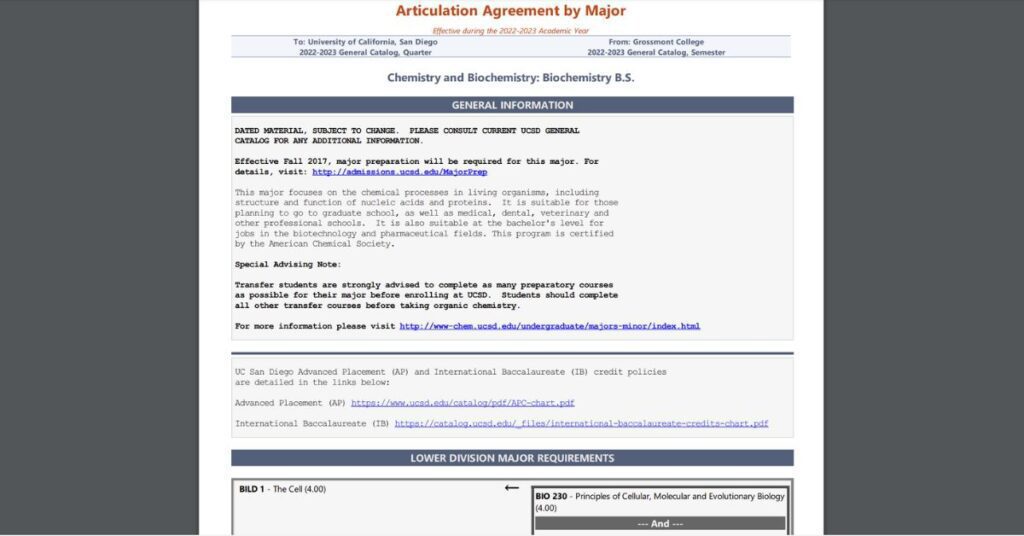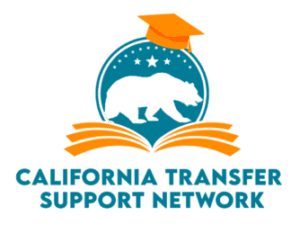You may have heard the term “college course articulation” before but not really understood what it meant. In short, college course articulation is the process of determining how the courses you take in college will apply to your degree. This is important because it can save you time and money in the long run.
This blog post will take a more in-depth look at college course articulation and how it works. By the end, you should better understand how articulation works and how it can benefit you as a student.
What Does Course Articulation Mean?
As we mentioned above, college course articulation determines how your college courses will apply to your degree.
You can save time and money by understanding what courses you need to fulfill your degree requirements. For example, let’s say you’re an engineering student who takes a physics course at your local community college.
If that community college has an articulation agreement with your university, then you may be able to transfer that course credit and apply it toward your degree.
Recommended Reading: 5 Tips to Improve Activities Section Common App
The course articulation process is extremely beneficial for motivated students with a clear-cut pathway to transferring. Interacting with the course articulation process by students represents a fundamental need for more resources and information surrounding course articulation and the course articulation process more generally.
This can save you time and money because you won’t have to retake the course at your university (and pay for it again).
Depending on who you ask, the use of the word “articulation” can derive different meanings. According to the Handbook for California Articulation Policies and Procedures, articulation is defined as
the process of developing a formal, written agreement that identifies courses (or sequences of courses) on a “sending” campus that are comparable to, or acceptable in lieu of specific course requirements at a “receiving” campus.
In simpler terms, the process is defined explicitly to guarantee that students who successfully complete an articulation course will receive credit for having taken the proper class.
Furthermore, it provides assurance to the student that they received the required instruction and preparation needed to move on to receive the credit from another institution.
What is An Articulation Agreement?
Articulation agreements, sometimes referenced as transfer agreements, are formal partnerships between two institutions that lays out the framework for course transferability.

While articulation defines the process of examining individual courses for comparability, an articulation agreement is merely the conglomeration of those individual courses laid out in a formal document.
How Does Course Articulation Work?
There are two main types of articulation agreements: general education (GE) agreements and major agreements.
General Education Agreements: General Education Requirements (GERs) agreements are between two schools and state what courses will be accepted to satisfy the general education requirements.
For example, if a student takes English Composition at a community college, there is a good probability that the requirement will also be fulfilled at their university.
Agreements Between Major Programs: These agreements are established between schools and highlight which courses will be accepted for credits in specific majors.
Say you intend to pursue Nursing as your major. In this case, there would be an articulation agreement between your community college and the chosen university that plans out which Nursing courses from your community college will count towards nursing credit at the university.

Who Creates Articulation Agreements?
Generally, articulation agreements are established between two institutions of higher education (i.e., two-year community colleges and four-year schools).
It identifies courses that the community college offers, which is seen as comparable to that of the receiving institution.
There may be instances where schools and colleges have partnerships and formal articulation agreements established, but the vast majority of course articulation is referencing those from community college to university.
For example, some institutions can generate partnership agreements between out-of-state or private universities that provide four-year degree programs.
Other institutions create articulation agreements with participating universities as a part of the program requirements and develop specific course requirements that are unique to one institution.
Who Benefits the Most from Course Articulation?
All educators, institutions, and students benefit from the process. However, we are most focused on transfer students and community colleges.
Transfer Students
The primary beneficiary of the course articulation process is the community college students who have demonstrated an interest in transferring.
Prospective transfer students can identify the academic programs they are interested in and can confidently enroll in courses they know will transfer.
This is thanks to the California articulation policies that have showcased, in a written agreement, which classes are needed to fulfill program requirements.
Community College System
Another beneficiary of the articulation process is community colleges. One of the hallmarks of community colleges is their ability to provide a low-cost education that progresses a student towards eventually transferring for a bachelor’s degree.
Part of the issue that dissuades many students from attending a community college is the uncertainty that certain courses will transfer.
The last thing a student wants to do is spend money on taking courses only to find out that three or four of them, over a two-year span, were completely useless in their pursuit to transfer.
When community colleges have their courses articulated, it boosts the prospects of students enrolling and commits the institution to a formal agreement that will guarantee students a transfer opportunity.
It further reveals the path students can take to acquire an associate degree. A success metric for community colleges is the percentage of students leaving every year to acquire a bachelor’s degree.
The percentage of transfer students a community college maintains and those students leaving with an associate degree are consequential factors in promoting community college education.
Recommended Readings:
Learn How to Transfer from Community College to University in One Year | Step-by-Step
Cuyamaca College: Everything you Need to Know!
How Can I Tell Which Classes Will be Accepted by the Other Institution?
The answer to this question depends on where you live and the process of your local community college district.
For California articulation policies, the University of California (UC), California State University (CSU), and California Community Colleges (CCC) have created a single resource for California transfer students to locate transfer agreements known as ASSIST.

To know if a course you are taking is transferable and accounts for transfer credit, you should visit ASSIST, which is the official repository of course-to-course articulation for the State of California and three higher education systems (UC, CSU, and CCC).
Simply follow these steps to bring up the articulation agreement:
- Select the institution you currently attend (community college)
- Select the institution you plan to transfer to (the partner institution)
- Select your declared Major from the Department list on the left sidebar
- Download or view the Agreement
Course Articulation for Declared Major
The articulation process will display major degree requirements besides merely showing transferable courses between one institution and another.
Related Reading: 6 Impacted Majors at UCLA you Should Know About | 2023
Related Reading: 11 Impacted Majors at UC Berkeley | 2022-2023 Admit Rates & Average GPA
These are requirements set forth by the major department at the partner institution (i.e, four-year school) that NEED to be completed in order for you to transfer successfully.
For example, suppose you are a declared Biochemistry major and you wish to attend the University of California San Diego. In that case, you will not only have to have completed the required 60 units, but you will also have to fulfill the requirements for that specific major (i.e., upper division Chemistry, Organic Chemistry, Calculus, etc).

Related: Applying to UCSD Using the UCSD Application Portal
All of the specific course requirements are depicted in the articulation agreement and are different depending on the major, department, school, and education progress.
Some institutions do not require students to complete all of the core major classes. Still, almost all students have to have started the education sequence for the major before being considered for admission.
Conclusion
Transfer agreements can be extremely beneficial for students because they provide a way to save time and money on their degrees.
If you’re ever unsure whether or not a particular course will transfer over, consult with an advisor from both schools involved in the agreement.
And remember, even if two schools have an articulation agreement in place, not all courses will necessarily transfer over— so always double-check!





